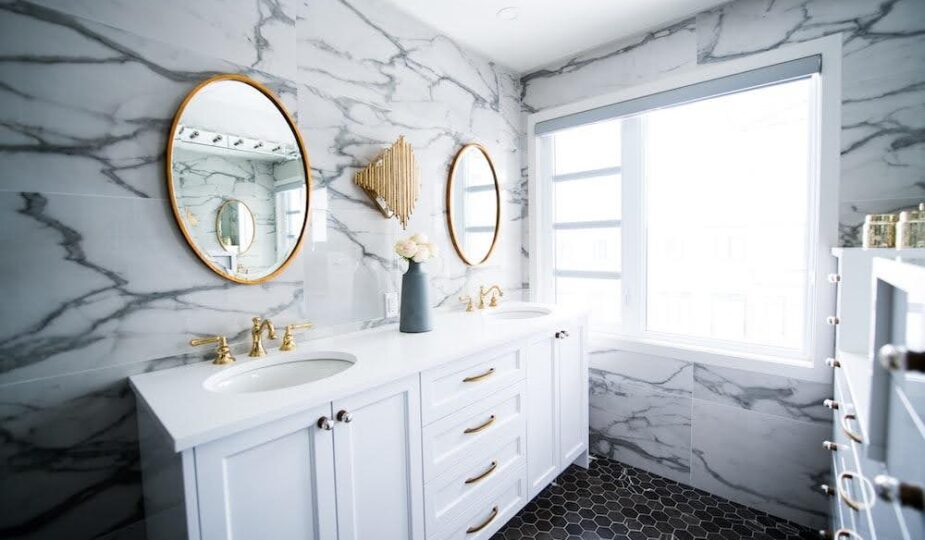Renovating a bathroom is a multifaceted project that intertwines functionality with aesthetics, creating a space that not only meets the practical needs of daily use but also serves as a personal sanctuary. Whether it’s a small update or a complete overhaul, a bathroom renovation requires careful planning, a clear vision, and an understanding of the key elements that contribute to a successful transformation. This article explores the essential aspects of bathroom renovation, offering insights and guidance to navigate this complex yet rewarding endeavor.
1. Setting Clear Objectives
Before embarking on renovating a bathroom, it’s crucial to define your objectives. Are you looking to update the aesthetics, improve functionality, increase accessibility, or enhance the resale value of your home? Understanding your primary goals will guide your decisions throughout the renovation process, from design to material selection.
2. Design and Layout
The design and layout of your bathroom play a pivotal role in its overall functionality and appeal. Consider the space’s limitations and possibilities, and think about how to optimize the layout for ease of use and comfort. Incorporating elements like a walk-in shower, a double vanity, or a freestanding tub can significantly enhance the bathroom’s functionality and aesthetic. Employing a professional designer or utilizing design software can help visualize the space and explore different configurations.
3. Material Selection
Choosing the right materials is paramount in a bathroom renovation. Materials should not only complement the desired aesthetic but also withstand the humid and wet conditions typical of a bathroom. Porcelain tiles, for example, are a popular choice for flooring and shower walls due to their durability and water resistance. When selecting countertops, materials like quartz offer resilience and low maintenance, making them ideal for high-use areas.
4. Plumbing and Electrical Considerations
Bathroom renovations often involve plumbing and electrical work, which can significantly impact the project’s scope and cost. Upgrading fixtures, relocating plumbing, or adding features like underfloor heating requires careful planning and professional execution. Ensuring that all plumbing and electrical work adheres to local building codes and standards is essential for both safety and functionality.
5. Lighting and Ventilation
Proper lighting and ventilation are crucial components of a bathroom renovation. Adequate lighting enhances the functionality of the space and contributes to the overall ambiance. Incorporating a combination of task, ambient, and accent lighting can create a versatile and inviting atmosphere. Ventilation, typically achieved through an exhaust fan, is vital for preventing moisture buildup, which can lead to mold and mildew growth.
6. Storage Solutions
Efficient storage solutions are key to maintaining a clutter-free and organized bathroom. Consider incorporating built-in niches, vanity cabinets, and shelving to maximize storage space. Tailoring storage options to your specific needs can greatly enhance the bathroom’s functionality and aesthetics.
7. Water Efficiency
Incorporating water-efficient fixtures is an environmentally responsible and cost-effective aspect of bathroom renovation. Low-flow toilets, showerheads, and faucets can significantly reduce water usage without compromising performance, contributing to long-term savings and sustainability.
8. Aesthetic Cohesion
Achieving aesthetic cohesion involves creating a harmonious blend of colors, textures, and materials. Whether you’re aiming for a modern, minimalist look or a more traditional, luxurious feel, maintaining a cohesive design theme is essential for a visually appealing space. Consider how different elements, from tile patterns to hardware finishes, work together to create a unified look.
9. DIY vs. Professional Renovation
Deciding between a DIY approach and hiring professionals depends on the project’s complexity, your skills, and your budget. While DIY can offer cost savings, it’s important to realistically assess your abilities and the potential for costly mistakes. For significant structural changes, plumbing, or electrical work, hiring experienced professionals is advisable to ensure safety and quality.
10. Budgeting and Planning
A successful bathroom renovation requires meticulous budgeting and planning. Costs can vary widely based on the project’s scope, materials, and labor. Setting a realistic budget that includes a contingency for unexpected expenses is crucial. Additionally, planning the project timeline, especially if the bathroom is heavily used, can minimize disruptions to your daily routine.
Conclusion
Renovating a bathroom is a complex process that offers the opportunity to transform a functional space into a personal haven. By carefully considering your objectives, layout, materials, and other key factors, you can create a bathroom that not only meets your practical needs but also reflects your personal style and enhances your home’s value. Whether you embark on this journey independently or with the help of professionals, a well-planned bathroom renovation can yield a space that provides comfort, efficiency, and aesthetic pleasure for years to come.







